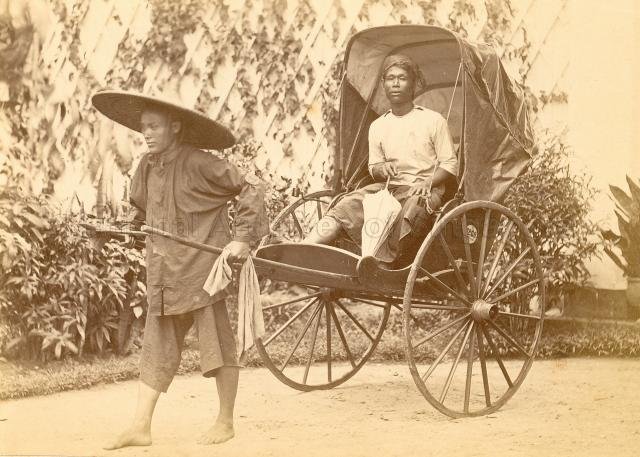31 LOW NONG NONG 劉亦嫩
From Trishaw Puller to Workers’ Hero
Low Nong Nong 劉亦嫩 (DOD 1938) Place of Ancestry: Dionglok 長樂
“His funeral the same day was an unnerving, demonstrable display of strength and solidarity. Three thousand men solemnly followed the lorry bearing his coffin to BUKIT BROWN CEMETERY to a pauper’s grave, and, as the police anxiously stood by and watched, one of the longest funeral processions in Singapore’s recent history, stretching from Wajang Satu to Newton Circus, passed.” (Source: Rickshaw Coolie: A People’s History of Singapore, 1880-1940)
Rickshaw pullers in the early 20th century faced significant difficulties, often earning as little as a dollar a day, which was insufficient for basic meals after spending up to 30 cents on rickshaw rental. Many had to take on additional jobs, such as working as construction laborers.
The community of rickshaw pullers had been periodically unemployed from 1928 onwards and throughout the post-Depression 1930s. To make matters worse, the colonial government had reduced the number of rickshaw licenses to encourage the use of the motorcar.
In response, “siong tau” profit-seeking rickshaw fleet owners raised rental fees. It was also a requirement for the pullers to contribute part of their earnings to the China Relief Fund to support the Sino-Japanese war.
In 1938, about 4,000 workers went on strike. It meant that there would be no earnings. Low had to borrow money from a friend. The strike, lasting from October 4 to November 14, turned violent on October 17 when police clashed with rickshaw pullers at Arab Street and Victoria Street. Low was part of a group attempting to rescue a rickshaw puller who had been arrested earlier.
Low Nong Nong was found lying face down with a fractured skull on the side of a street emptied of his comrades. He was taken to Tan Tock Seng Hospital but succumbed to his injuries. In under 24 hours, a strike turned violent, a rickshaw puller’s life came to a violent and senseless end and by the afternoon he was buried. Low was believed to be about 40 years old, no one really knew. He may have died penniless, alone and without kin, but 3000 of his comrades were moved and inspired to give him an honorable send off.
Low Nong Nong’s tough life underscored the poverty and exploitation of workers during the colonial era, highlighting the stark divide between the rich and poor.
Eventually, the riot concluded with the rickshaw pullers and owners agreeing on pay. However, the government later deported around 1,600 rickshaw pullers to China due Tok concerns about future strikes and made plans to phase out the industry.
In July 1946, the Municipal Commission decided not to renew the licenses of the 3,500 rickshaws in Singapore, as it was considered inhumane to treat the pullers as “beasts of burden” in this “degrading trade”.
Rickshaws were officially phased out on 1 May 1947, only the photos remain.
by Lee Chyen Yee


Recent Comments